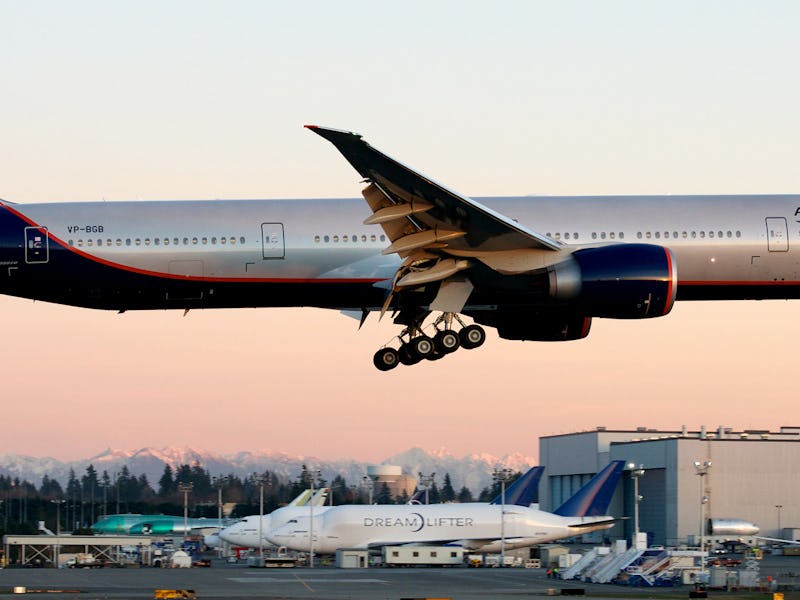How Boeing Wrung Loads of Dead Weight Out of Its Newest 777 Design
Just 2 percent lighter makes a vast difference.

As standalone pieces of machinery, commercial airliners are substantially heavier than the air they ply. The average takeoff weight of a Boeing 777-300ER, for example, is in the neighborhood of 775,000 pounds, and with fuel prices often in flux, a lighter plane that boasts the same capacity would mean huge savings for airlines, constantly looking to cut costs, often in bizarre ways.
But engineers at Boeing, the aerospace company behind the world’s lightest metal, have been working to shrink the 777-300ER, which, as part of the 777 family, is the largest twin-jet to ever navigate the skies. Roy Eggink, chief engineer behind the project — called 777 Airplane Performance — explains Boeing’s methods for decreasing the gargantuan plane’s weight by 2 percent, and notes in a new video how consequential that seemingly minor reduction will be for the cost of fuel.
To hone in on the vastness of a 2 percent weight reduction, Eggink likens aeronautics to Olympic sprinting: “To shave off a few hundredths of a second, they’ll wear ultralight shoes to reduce their weight. We’ve taken that same scientific approach toward making the airplane more efficient.”
Eggink glosses over some of the more pragmatic tactics engineers are using to prune the 777-ER’s brawny stature, like ridding it of washers. Even the most humble hardware costs money to haul through the sky: “We literally have 15 to 20,000 washers throughout the airplane. If you can take the washers off and just have a bolt and the nut, you’re saving the weight of two washers. That’s 117 pounds.” When it comes to mechanics, the inclusion of an electronic tailskid meant to replace its clunkier counterpart should help the plane shed an additional 325 pounds.
Yes, this is crass capitalism at work. But look at that plane there. It’s still quite a bit heavier than air. And yet, elegantly less so.